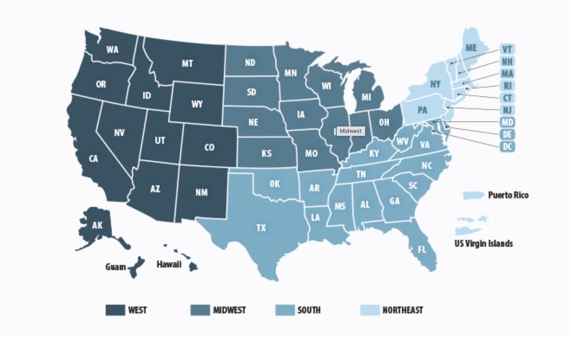Americans are heading south, and not just for vacation — they’re staying there for good.
Kristie Wilder is a demographer with the U.S. Census Bureau.
"The South was the only region that had positive domestic migration, where others — people from other regions — were coming in," Wilder said.
According to data from the agency, the South added more than 1.3 million residents in 2022. Most came in the form of domestic migration, or someone moving from another part of the country to the South.
"Net domestic migration for the South was 867,935. The Northeast lost 460,736 to domestic migration. The Midwest lost 174,049 to domestic migration and the West lost 233,150 to domestic migration," Wilder said.
Justus Lester was one of more than 867,000 people who moved to the South last year.
"Because of the weather. Definitely because of the weather is the main reason," Lester said.
Lester moved from Westchester, New York after 25 years to Kissimmee, Florida in May of 2022 and says he enjoys being able to be outside more.
"I do photography, which was a hobby before. And now since I moved here, I've turned it into a profession because it's something I can do outdoors 365 days a year," he said.

While year-round sun is a draw for many to southern states — it’s not the only factor.
Others who moved to the South say they came for different political leadership and for a more affordable lifestyle. Lester says he and his wife were able to buy two homes in Kissimmee for the price of their old home in Westchester.
That affordability is bringing people in and the population up. The six states that grew the most through domestic migration were all in the South, according to the U.S. Census Bureau.
Florida added 318,000 residents via domestic migration, 230,000 people left another state for Texas and North Carolina, South Carolina, Tennessee and Georgia each grew by more than 80,000 people.
Meanwhile, California, New York and Illinois experienced the biggest population declines.
More than 343,000 people left California for elsewhere and New York’s population dropped by almost a full percentage point.
The southern migration means for the first time in U.S. history, the country’s population center is on track to move toward the South this decade.
The Census Bureau defines "population center" as the average location of where people in the U.S. live — it determines it by looking at the map as a scale in which each person has equal weight. The population center is where the scale would balance.
The point has historically moved west, but it’s trended more south in recent years.
A shifting population is already changing industries and local economies. Major companies including Tesla and Hewlett Packard moved headquarters to Texas and Apple announced a one-billion dollar campus in North Carolina.
Growing populations could also have major political and cultural ramifications too — meaning the South will continue to play a major role in shaping America’s future.
SEE MORE: These cities have some of the worst traffic in the world
Trending stories at Scrippsnews.com



